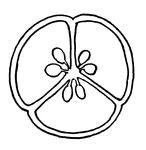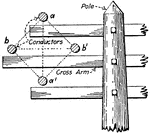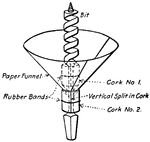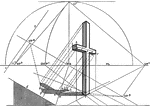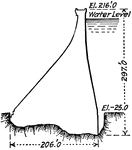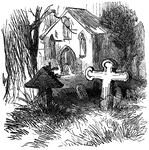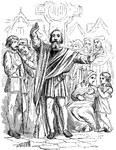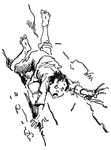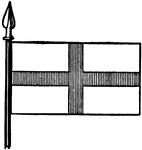
Flag of St. George
The Flag of St. George is a flag of Great Britain. It shows the red cross of St. George on a white field,…
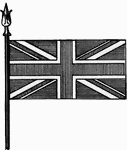
Union (National) Flag of Great Britain
The Union Flag is the national flag of Great Britain. It is more properly called the 'Great Union',…
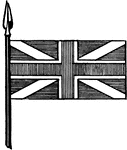
Union Flag: Crosses of St. George, St. Andrew, and St Patrick
The Union Flag after the Union of Ireland and Great Britain, and the addition of the cross of St. Patrick.

Figwort
This illustration shows a Figwort, a member of the genus Scrophularia. It has the characteristic features…

Modern Flour Mill
This illustration shows a cross-section of a modern flour mill. Wheat is received in bin a, and first…

Flowering Rush
A European plant which grows in stagnant or nearly stagnant water. It has long, sword-shaped leaves,…

Frankincense
Frankincense (Olibanum) is a gum resin obtained from Boswellia Carterii, of the order Burseraceae, and…

Fucus
Fucus is the generic name of various species of brown seaweed which form the main vegetation of rocky…
Nerve Ganglia (Spinal)
Nerve Ganglia, or Knots (sing. Ganglion; Knot) occur as collections of nerve cells on the course of…
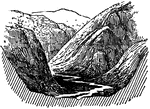
Valley
If land falls to a minimum line with a steady slope, the land form created is called a valley.
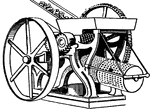
Cross Mill and Sieves (Glue)
This illustration shows a cross mill and the sieves used to crush and filter bones in glue manufacturing.
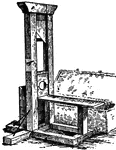
Guillotine
(1.) The guillotine is an instrument employed for the purpose of decapitation. It was officially introduced…
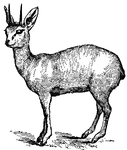
Klipspringer
The Klipspringer, or Kainsi, is a small but very active antelope (Oreotragus saltator), found in the…

Clove Hitch
To tie a clove hitch, first pass the end 'a' around a spar, and cross it over 'b'. Pass it around the…

Lantern Tower at St. Ouen; Rouen, France
In Gothic architecture, a lantern tower is frequently placed over the center of cross churches, and…

Lantern Tower at Grey Friars, King's lynn
In Gothic architecture, a lantern tower is frequently placed over the center of cross churches, and…

Lantern Tower at St. Botolph's; Boston, Lincolnshire
In Gothic architecture, a lantern tower is frequently placed over the center of cross churches, and…

Longitudinal Section of Larynx Seen from Behind
This illustration shows a longitudinal section of the larynx as seen from behind (A. Thyroid Cartilage;…

Cross of the Legion of Honor
The Cross of the Legion of Honor is a decoration composed of a star of five double rays, with a wreath…

Surveyor's Level
This illustration shows a Surveyor's, or Y-level. In use, the telescope is set perfectly horizontal…

Arrester Tank
A cross section of a General Electric company 115,000 - 135,000 volt electrolytic arrester tank.
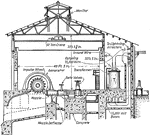
Impulse Wheels
A cross-section of the Edison Electric Company's hydro-electric station at Kern River, California, containing…
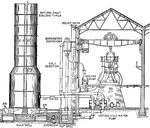
Steam Engine
Cross-section of a steam engine plant with Alberger barometric condenser and cooling tower.

Crag and Tail
Crag and tail, a term used to designate a peculiar hill conformation. a, crag; b, tail (boulder clay,…
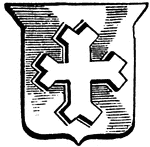
Fourchee
Fourchee, having the ends branched and the ends of the branches terminating as if cut off abruptly.

Rappahannock River
American soldiers retreating across the Rappahannock river in Northwest Virginia. It shows an example…
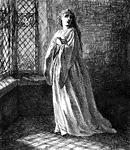
Woman with Dagger
A woman in a long white robe clutches a dagger, or perhaps a cross. She stands by large windows.

Girl and Woman
A woman with a small child in tow. The woman appears cross and the child looks anxious.
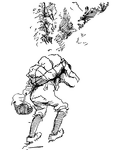
Hiker with Backpack
A man is carrying a heavy package or backpack up a steep hill. He is also holding a covered basket in…
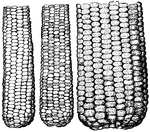
Cross Breeding Corn
Cross breeding of white pop corn (left) with yellow dent corn. The resulting hybrid is in the center.
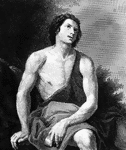
John the Baptist
"And in those days cometh John the Baptist, preaching in the wilderness of Judaea, saying, Repent ye;…
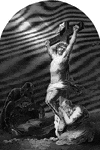
Christ on the Cross, Pierre-Paul Prud'hon
Engraving by W.C. Wrankmore after Pierre-Paul Prud'hon's Christ on the Cross, 1823.
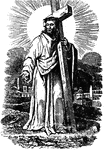
Jesus Carrying His Cross
Illustration of Jesus carrying his cross from the 1853 title page of a German Bible.

Jesus Nailed to the Cross
" And they bring him unto the place Golgotha, which is, being interpreted, The place of a skull. And…

The Visitation - Mary Visits Elizabeth
"And Mary arose in these days and went into the hill country with haste, into a city of Judah; and entered…

The Piazza del Popolo in Rome
View of the Piazza del Popolo looking west from the Pincian Hill. On the left are the twin churches…
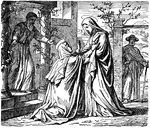
The Visitation - Mary Arrives at Elizabeth's Home
"And Mary arose in these days and went into the hill country with haste, into a city of Judah; and entered…
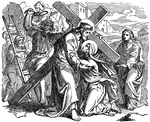
Jesus Carrying the Cross on the Way to Calvary
"They took Jesus therefore: and he went out, bearing the cross for himself, unto the place called The…
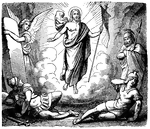
The Resurrection of Jesus after the Angel Removed the Stone from the Tomb Entrance
"And behold, there was a great earthquake; for an angel of the Lord descended from heaven, and came…
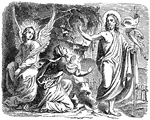
Jesus Appears to Mary Magdalene Outside the Tomb
"When she had thus said, she turned herself back, and beholdeth Jesus standing, and knew not that it…

The Acropolis of Athens - Restoration of the Propylaea
Illustration of the Acropolis restored to what it may have looked like when originally completed. The…

Franks Crossing the Rhine to Establish Themselves on the West Bank as Allies of Rome
A group of Franks, mainly men with a couple of women and children, cross the Rhine River on a wooden…

An 11th Century Norman Castle, Aerial View
Illustration of an aerial view of an 11th century Norman castle in Europe. From this view, it is possible…

A German Town on the Main River, Possibly Würzburg
Illustration of a town in Germany during the late Middle Ages, or medieval period. The town sits on…
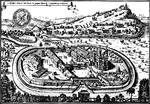
A German Benedictine Monastery with a Small Town in the Background - Aerial View
An aerial view of a German Benedictine Monastery compound. A small town is nestled at the foot of a…

The Holy See Coat of Arms with Crosier, Processional Cross, and Decorative Foliage
An illustration of the coat of arms of the Holy See with a crosier, processional cross, and some decorative…
